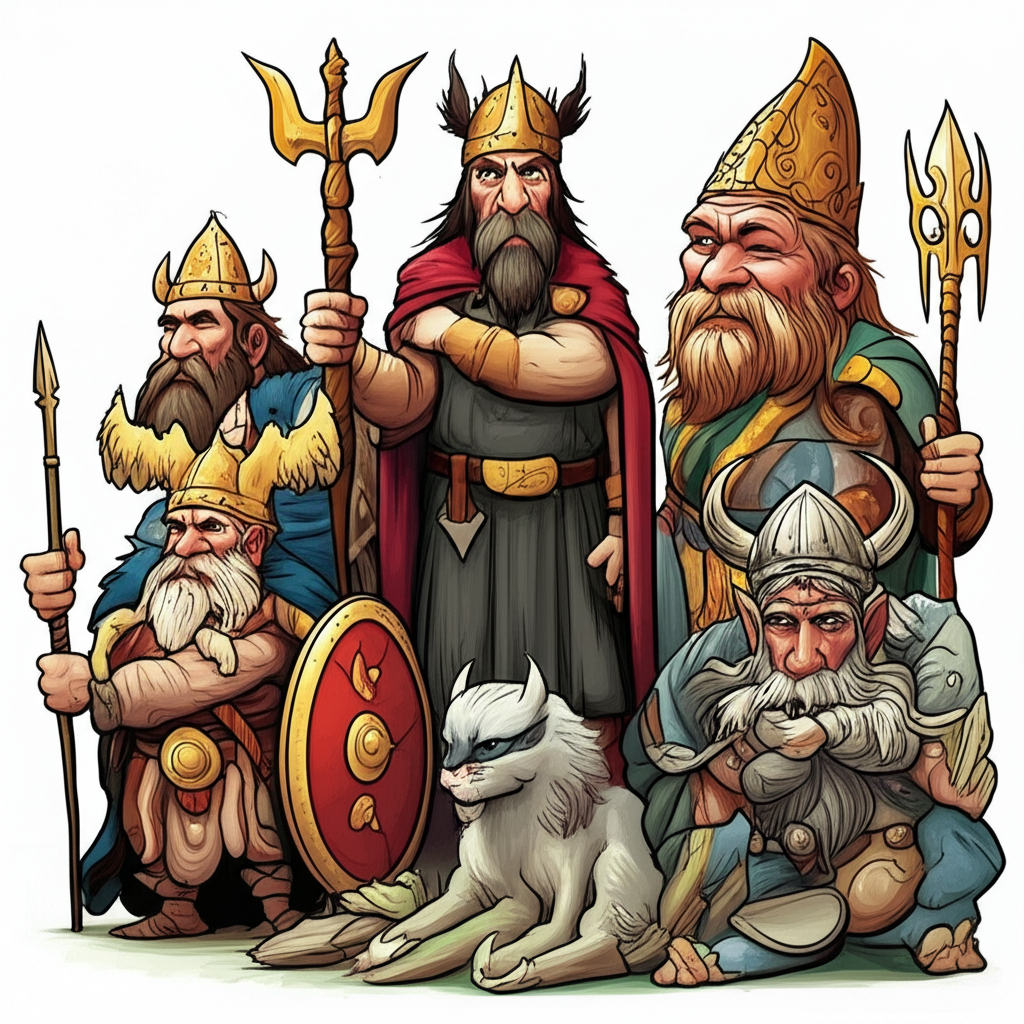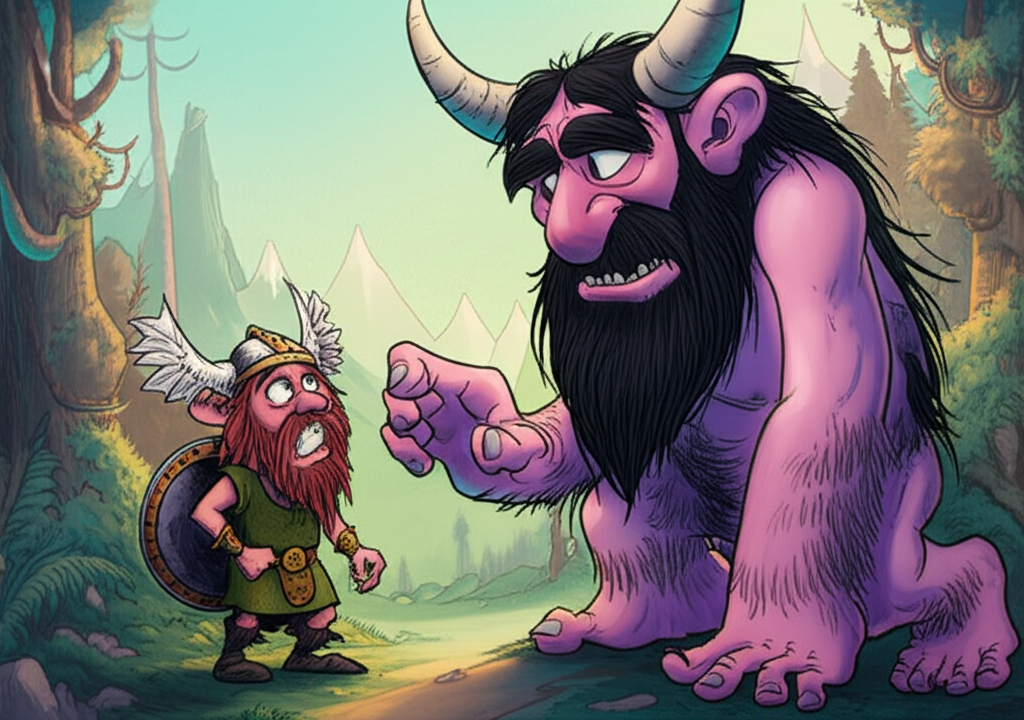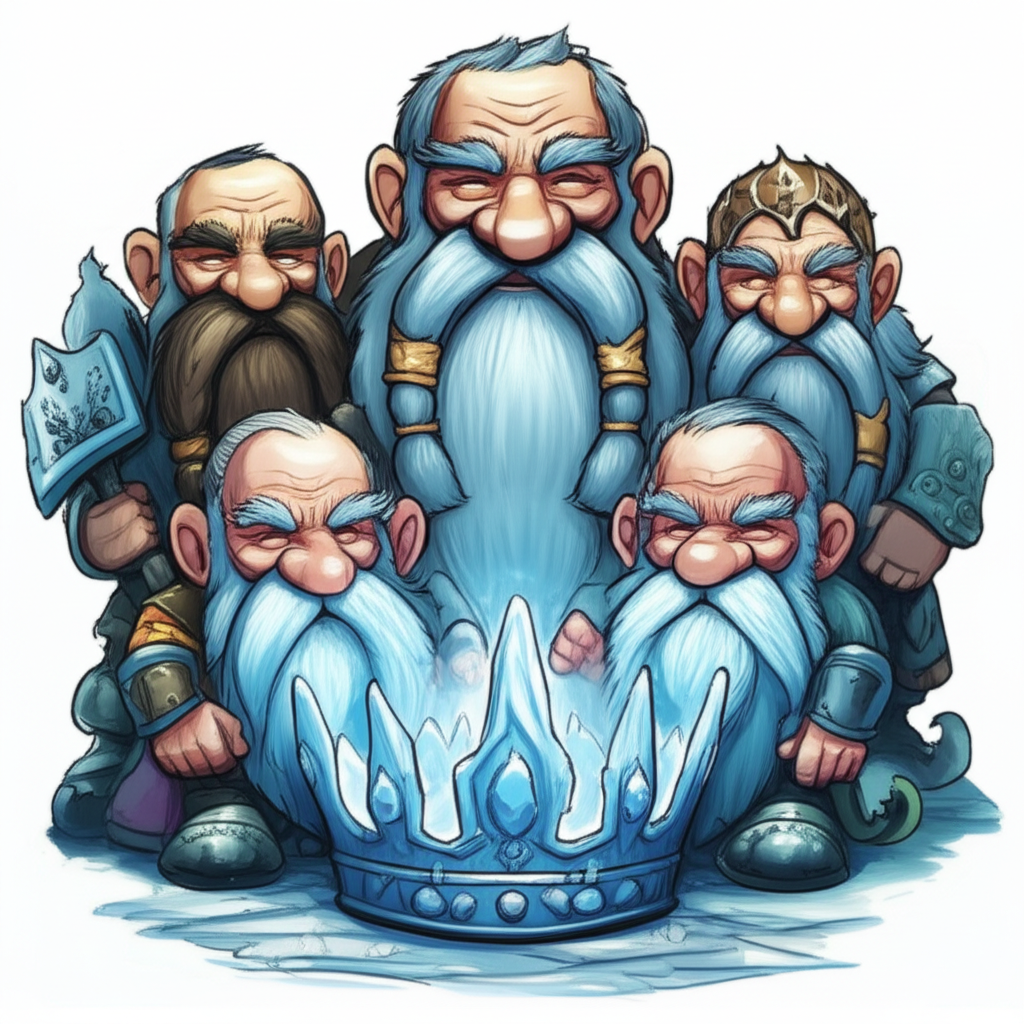
The First War’s Echo: Midgard and the Aftermath of the Aesir-Vanir Conflict
Introduction
From the mist-shrouded fjords and dense, ancient forests of Scandinavia comes a foundational story of the Norse people—a myth that predates even their most famous tales of heroes and monsters. It is the story of the first war, a cosmic conflict not against giants or beasts, but between the two great families of divine beings themselves: the Aesir and the Vanir. This traditional narrative, passed down through oral tradition and later recorded in texts like the Poetic Edda and the Prose Edda, is not a historical account but a profound cultural artifact. It is a story ancient people told to make sense of their world, to explain the very fabric of their society, and to understand the delicate balance between order and nature, war and peace.
Origins and Cultural Background
This myth emerged from the world of the Vikings, a society that thrived during a period from the late 8th to the late 11th centuries. Theirs was a life defined by a harsh and beautiful landscape. They were farmers, traders, explorers, and raiders, living in a world governed by the unforgiving cycle of the seasons. The biting cold of winter could mean starvation, while a bountiful summer harvest meant life and prosperity. The sea was both a highway to riches and a watery grave.
The Norse people viewed their world as one of many, a realm called Midgard (Middle-Earth) suspended in the great world tree, Yggdrasil. Above them was Asgard, the home of the gods, and around and below them were other realms of giants, elves, and dwarves. Their worldview was not one of simple good versus evil, but of a constant struggle between opposing forces: order versus chaos, creation versus destruction. Fate, or Wyrd, was a powerful, unchangeable force that even the gods were subject to. It is within this dramatic and cyclical worldview that the story of the Aesir-Vanir War finds its meaning.
Character Description: The Two Divine Tribes
To understand the war, one must first understand the symbolic nature of its combatants. They were not merely characters but personifications of the core principles that governed the Norse world.
-
The Aesir: Residing in the celestial fortress of Asgard, the Aesir were primarily associated with order, law, power, warfare, and leadership. Figures like Odin, the Allfather, represented wisdom, poetry, and the fury of battle. Thor was the embodiment of raw strength, the protector of Midgard who wielded thunder and lightning. They symbolized the structured, hierarchical, and martial aspects of society—the chieftains, the law-givers, and the warriors who defended the tribe.
-
The Vanir: Hailing from the verdant realm of Vanaheim, the Vanir were connected to the earth, the sea, and the cycles of nature. They were patrons of fertility, prosperity, abundance, and a mystical form of magic known as seidr. Key figures included Njord, the lord of the seas and winds; his son Freyr, who governed the sun, rain, and harvests; and his daughter Freya, the personification of love, beauty, and wealth. The Vanir represented the untamed, life-giving forces of the world—the success of a crop, the bounty of a fishing expedition, and the continuation of the family line.
Main Story: The Scars and Healing of Midgard
The war began not with a grand invasion, but with a clash of values. A Vanir sorceress named Gullveig came to Asgard, her love of gold and potent magic stirring greed and chaos among the Aesir. Thrice they tried to destroy her, and thrice she was reborn from the flames. Seeing this as an unforgivable assault, the Vanir declared war.
For the people of Midgard, the conflict was not a distant spectacle of flashing swords in the heavens. It was a tangible, terrifying reality that reshaped their world. The war in the divine realms echoed as a profound sickness in the mortal one. When the Aesir fought, the skies over Midgard churned with unnatural storms. The sun hid behind a perpetual grey veil, and winters grew long and cruel, a "fimbulwinter" before its time. The principles of order and honor, which the Aesir championed, seemed to break down among mortals. Oaths were broken, kinship ties frayed, and chieftains led their people into pointless, bloody conflicts.
When the Vanir retaliated, the very land seemed to die. The fields grew barren, yielding only dust and withered stalks. Livestock grew sick and failed to bear young. The once-generous seas, domain of Njord, became a cauldron of violent waves, smashing fishing boats against the rocks and denying humanity its sustenance. The life-giving magic of the Vanir was twisted into a force of blight and decay. Midgard was caught in the crossfire, a world starved of both the Aesir’s order and the Vanir’s vitality. The people huddled in their longhouses, watching their world wither, feeling abandoned by the very forces that were meant to sustain it.
The war raged for an age, with neither side able to gain a decisive victory. The martial might of the Aesir was matched by the potent magic and resilience of the Vanir. Eventually, weary of the endless, destructive stalemate, the two sides met to forge a peace. The truce was not merely a cessation of hostilities; it was a unification. To seal their pact, they exchanged hostages. The Vanir sent their most cherished: Njord, Freyr, and Freya, who went to live in Asgard. The Aesir sent the wise Mimir and the strong but indecisive Hoenir to Vanaheim.
The effect of this peace on Midgard was immediate and profound. As the Vanir deities settled in Asgard, a new harmony descended upon the world. The sun, as if guided by Freyr’s gentle hand, finally broke through the clouds. A warm, nourishing rain fell upon the parched earth, and for the first time in memory, green shoots pushed through the soil. The seas, calmed by Njord’s presence among the Aesir, grew gentle once more, and fish returned to the nets of humankind. The influence of Freya brought a return of love and life; children were born healthy, and the spirit of community was rekindled.
The order of the Aesir was no longer brittle and aggressive; it was now tempered by the wisdom of nature. The vitality of the Vanir was no longer wild and chaotic; it was now guided by structure and purpose. This new, integrated pantheon represented a complete and balanced world. As a final symbol of their unity, all the divine beings spat into a single vat, and from this mixture, they created Kvasir, a being of supreme wisdom and poetry, the living embodiment of their reconciliation. For Midgard, his creation symbolized the dawn of a new age—one where war and peace, nature and society, were not opposing forces, but two essential halves of a greater whole.
Symbolism and Meaning
To the Norse people, the story of the Aesir-Vanir War was likely a powerful allegory. It may have reflected a distant folk memory of a conflict between two different cultures or religious cults that eventually merged. More profoundly, it served as a creation story for their societal structure. It explained why they prayed to Odin for victory in battle but to Freyr for a good harvest. The myth taught a crucial lesson: a society built only on martial strength and rigid order (the Aesir) is unsustainable and sterile. Likewise, a society based only on natural abundance and pleasure (the Vanir) lacks the structure to defend itself and endure. True strength, the story suggests, lies in integration. A successful world, and a successful life, requires a balance between these forces—the warrior and the farmer, the leader and the nurturer, the sky and the earth.
Modern Perspective
Today, the echoes of this ancient war can be found throughout modern popular culture. While often simplified, the core archetypes of the Aesir and Vanir persist. In literature, authors like Neil Gaiman in Norse Mythology have retold these tales for a new generation, preserving their narrative power. In cinema, the Marvel Cinematic Universe has transformed the Aesir into cosmic superheroes, with characters like Thor and Odin becoming household names, though their portrayals are far removed from their mythological origins. Video games such as God of War and Assassin’s Creed Valhalla allow players to immerse themselves in richly imagined Norse worlds, bringing the conflicts and characters of the mythology to life in interactive and compelling ways. These modern interpretations demonstrate the enduring imaginative appeal of these ancient stories and their capacity to be re-envisioned for contemporary audiences.
Conclusion
The myth of the Aesir-Vanir War is far more than a simple tale of a battle between gods. It is a sophisticated and enduring piece of cultural heritage, a narrative framework the Norse people used to understand the complexities of their existence. It is a story about conflict, reconciliation, and the essential need for balance in the world and within society.
As we reflect on such stories, we appreciate them as products of human imagination and cultural history. As Muslims, we acknowledge and hold firm in the belief that only Allah is the one true Creator and Sustainer of the universe, and these mythological accounts are stories from human cultures, not divine truth. By studying them, we gain insight not into the divine, but into the human condition—our timeless quest for meaning, our attempts to explain the world around us, and the incredible power of storytelling to capture the deepest truths of a culture.





